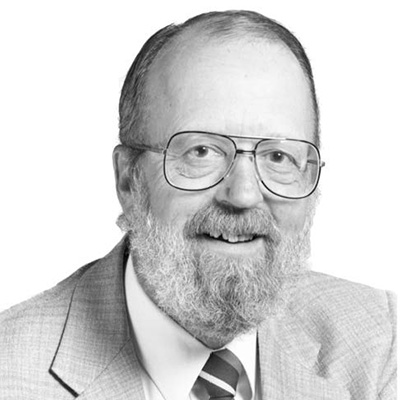Bio
BioCarl Bostrom was the fifth director of APL, serving from 1980 to 1992.
Bostrom, who was recruited by APL in 1960 while he was finishing his doctoral thesis research in nuclear physics at Yale, quickly rose through Laboratory management—in 1974, he was named the Space Department’s first chief scientist; five years later, department head; and in 1979, the Lab’s assistant director for space systems. After less than a year as Space Department head, Bostrom was asked to serve as deputy director until Alexander Kossiakoff retired in 1980 and to then succeed him.
During the Bostrom years, the Lab’s emphasis broadened from developing individual ship defense systems to officially becoming a trusted technical adviser for Aegis and the technical direction agent for the Cooperative Engagement Capability program. APL’s missile development was also in high gear, and Bostrom invested in new facilities and upgrades that included the Guidance Systems Evaluation Laboratory to test and evaluate potential advances to various versions of Standard Missile.
Technology was evolving rapidly in the 1980s, and under Bostrom’s leadership, APL was quick to take advantage of it. Integrated circuits designed at the Lab led to unprecedented miniaturization, and the ability to create and process data grew exponentially.
Bostrom also placed new emphasis on analysis, creating the Naval Warfare Analysis Department and the Warfare Analysis Laboratory for war-gaming. The Lab improved Trident II nuclear submarine accuracy with the SATRACK program, led research to ensure continued SSBN security against adversary detection, and leveraged the detection research for new sponsors to advance the capabilities of tactical undersea warfare.
During Bostrom’s tenure, the Research Center became more innovative and diversified its sponsor base. Soon, Lab researchers were exploring gas pipeline corrosion, high-temperature superconductor materials, and biomedical advances that included developing a programmable implantable insulin-delivery system and a nonreusable syringe.
In 1983, when President Ronald Reagan stood up the Strategic Defense Initiative to prove the concept of a space-based anti-missile system, APL took on the challenge of demonstrating an in-orbit missile intercept in a very short period of time. APL built and launched—in just three years—the Delta 180, 181, and 183 spacecraft.
Bostrom, who retired in 1992, earned his doctoral degree in nuclear physics from Yale University.
